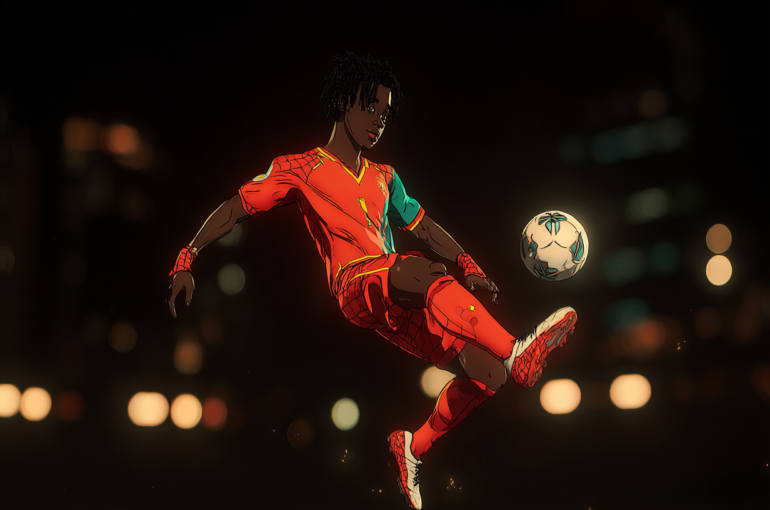How does AI learn? Meet AIbie
Imagine we’re guiding a young AI on its journey to master the art of recognizing animals in photographs a journey of learning not unlike a young student’s educational path, but with its own unique digital twist.
Chapter 1: The First Day of School
Our young AI, named Albie, enters its first day at the “Virtual Learning Academy” where it will learn from millions of photos. Each photo is labeled—cats, dogs, birds, and more. Albie’s task is to learn to recognize and categorize them just by looking.
Chapter 2: Learning the Ropes
As Albie starts training, it goes through countless examples. Each time it sees a photo, it makes a guess based on patterns it sees—shapes, colors, textures. Sometimes it’s right; often it’s wrong. But each mistake is a learning opportunity. This is akin to a child learning to differentiate animals based on features like fur, beaks, or tails.
Chapter 3: The Test
Albie is periodically tested by its teachers—the algorithms. These tests come in the form of new images Albie has never seen. How well Albie identifies these images tells its teachers about its learning progress. It’s like a pop quiz in school, ensuring Albie isn’t just memorizing but truly understanding the patterns that distinguish a dog from a cat.
Chapter 4: Back to the Drawing Board
Whenever Albie falters, its learning method—backpropagation—kicks in. This is like Albie sitting down with a tutor who points out why a fluffy tail belongs to a cat, not a dog. Albie’s internal parameters adjust slightly each time to reduce these mistakes in future tests.
Chapter 5: Graduation Day
After cycles of learning and testing, Albie has become adept at recognizing animals. It’s time to leave the academy and start helping in the real world—perhaps assisting biologists in identifying animals in wildlife photos or helping organize vast digital photo libraries.
Chapter 6: Continuing Education
Even after graduation, Albie continues to learn. With more photos and feedback from real-world applications, it refines its understanding, adapting to new animals or even better quality images. The learning never truly stops; it evolves.
Albie’s journey mirrors the structured yet dynamic process of AI learning, combining theoretical learning phases with practical, real-world applications and continuous improvements—a blend of the academic and the pragmatic, driven by both curiosity and the pursuit of utility.
ASK THE CEO
ASK THE CEO is our way of explaining what A.I. means for Jamaica. Have questions? ASK.
Here are some questions our audience have ask before
What are the common uses and applications of AI?
AI is used for contract analysis, object detection and classification, image recognition, content distribution, predictive maintenance, data processing, automation of manual tasks, and data-driven reporting1
What are intelligent agents, and how are they used in AI?
Intelligent agents are autonomous entities that use sensors to perceive their environment and actuators to perform tasks or achieve goals. They can be simple or complex and can be programmed to learn and improve.
Other articles
-

Is Artificial Intelligence the same as Machine Learning?
In the rapidly evolving world of technology, terms like Artificial Intelligence (AI) and Machine Learning (ML) are often used interchangeably. However, while they are closely related, they are not the same thing. In this blog post, we’ll dive into the intricacies of AI and ML, unravel their differences, and explore how they are shaping our […]
Enroll -

Caribbeans Can Win the World Cup with AI – The Island Blueprint for Global Football Glory
When people speak about the World Cup they often picture Europe or South America. Yet the Caribbean has entered a rare moment in football history. Curaçao has already qualified for 2026. Haiti is in. Jamaica and Suriname are still pushing through the playoffs. This is the first time in living memory that the region has […]
Enroll -

Hurricane Melissa vs AI
What AI Could Have Changed The satellite images told the story before most people wanted to believe it. On October 28, 2025, Hurricane Melissa made landfall near New Hope, Westmoreland, Jamaica, with sustained winds of 185 miles per hour and a central pressure of 892 millibars. It was one of the most powerful Atlantic hurricanes […]
Enroll -

AI and the Caribbean Climate
When Machines Learn Our Weather The fishermen leaving Castries harbor at 4 a.m. read weather in ways no app captures. They watch how the mountains hold mist, how the seabirds fly, how the water’s color shifts near the reef. Their fathers taught them, and their grandfathers before that, building prediction systems refined across generations. These […]
Enroll

